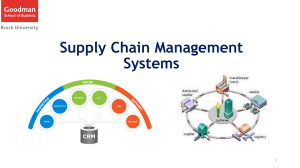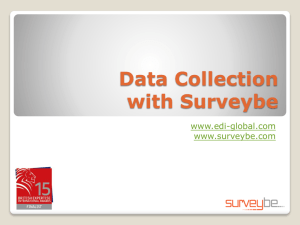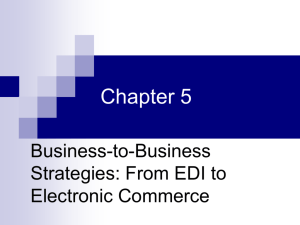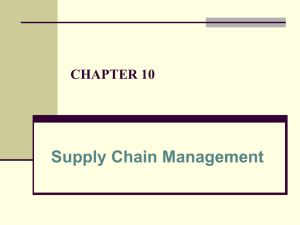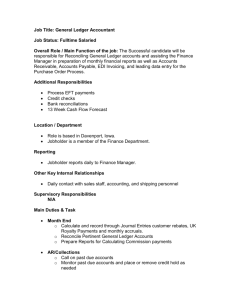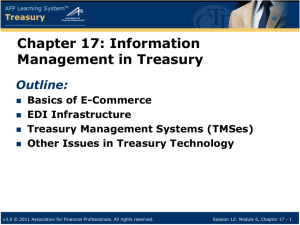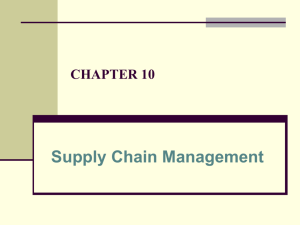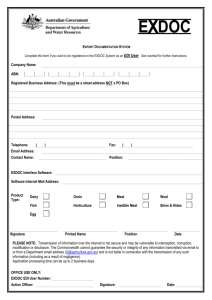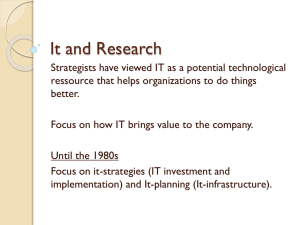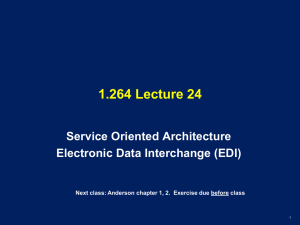ch13-2015
advertisement
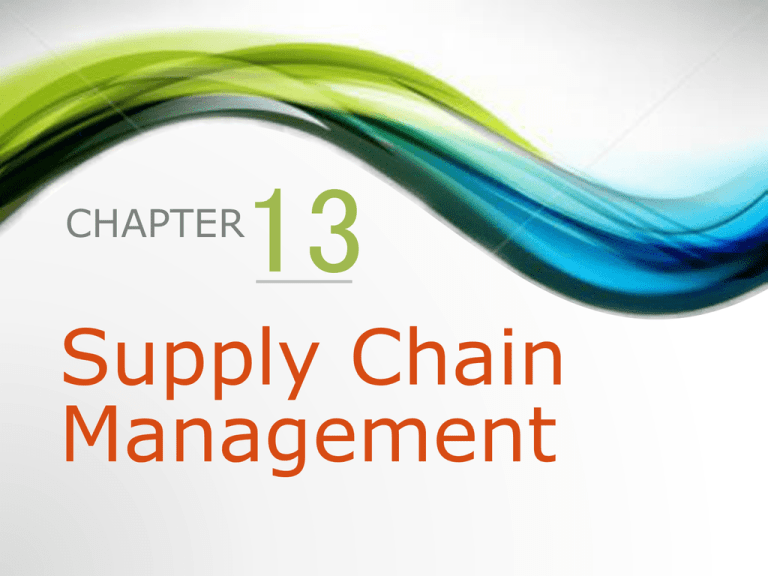
13 CHAPTER Supply Chain Management 1. Supply Chains 2. Supply Chain Management 3. Information Technology Support for Supply Chain Management >>> 1. Describe the three components and the three flows of a supply chain. 2. Identify popular strategies to solving different challenges of supply chains. 3. Explain the utility of each of the three major technologies that support supply chain management. OPENING > • Coca Cola Enterprises Describe why new supply chain management technology is so important to CCE. Describe the advantages of the new system to CCE. Refer to Chapter 2. Is the new supply chain management system at CCE a strategic information system? Why or why not? 13.1 Supply Chains • The Structure and Components of Supply Chains Supply Chain; Supply Chain Visibility • Supply chain: flow of materials, information, money, and services from raw material suppliers, thru factories and warehouses, to the end customers. • Supply chain visibility: abilities of orgs w/in the supply chain to access or view relevant data on purchased materials as they move thru their suppliers’ production processes and transportation networks to the receiving docks. 6 The Structure and Components of Supply Chains • Three Segments of the Supply Chain • Tiers of Suppliers • Three Flows of the Supply Chain Three Segments of the Supply Chain • Upstream • Internal • Downstream Segments; not “directions” Fig 13.1: Generic Supply Chain Three Segments of the Supply Chain - Upstream • Where sourcing or procurement from external suppliers occurs. Processes for managing inventory, receiving and verifying shipments, transforming goods to manufacturing facilities, and authorizing payments to suppliers Three Segments of the Supply Chain - Internal • Where packaging, assembly, or manufacturing occurs. • Processes production Testing Packaging Preparing goods for delivery Monitor quality levels Production outputs Worker productivity Three Segments of the Supply Chain - Downstream • Where distribution takes place. Receipt of orders from customers Develop network of warehouse Select carriers for delivery Implement invoicing system Three Flows of the Supply Chain 1. Material Flows Reverse Flows 2. Information Flows SCM systems here 3. Financial Flows 13.2 Supply Chain Management (SCM) • Five Basic Components of SCM • Supply Chain Management Systems • The Push Model Versus the Pull Model • Problems Along the Supply Chain • Solutions to Supply Chain Problems Five Basic Components of SCM 1. Plan 2. Source 3. Make 4. Deliver 5. Return • Goal of SCM (info) sys: reduce the frictions along the supply chain Push versus Pull Model Make to stock Make to order ’S ABOUT BUSINESS 13.1 • Crate & Barrel Increases Its Supply Chain Visibility Discuss the advantages of supply chain visibility for any organization. Explain how an increase in shipping costs can actually generate higher revenues for Crate & Barrel. Problems Along the Supply Chain Two Primary Sources of Problems Along the Supply Chain: 1. Uncertainties 2. The need to coordinate multiple activities, internal units, and business partners. • Demand Forecast • Bullwhip Effect Figure 13.2: The Bullwhip Effect Solutions to Supply Chain Problems Using Inventories to Solve Supply Chain Problems Vertical Integration Just-In-Time Inventory Information Sharing Vendor-Managed Inventory (VMI) Baxter Intl 13.3 IT Support for Supply Chain Management • Electronic Data Interchange (EDI) • Extranets • Portals and Exchanges Electronic Data Interchange (EDI): What it is • Communications standard that enables business partners to exchange routine documents electronically Formats documents according to agreed-upon standards Figure 13.3: Purchase Order Fulfillment without EDI Figure 13.3: Purchase Order Fulfillment with EDI Electronic Data Interchange (EDI): Benefits • Enhances customer service • Reduces cycle time • Increases productivity Minimizes data entry errors Length of the message can be shorter • Messages are secured • Minimizes paper usage and storage Electronic Data Interchange (EDI): Disadvantages • Business processes sometimes must be restructured to fit EDI requirements • Many EDI standards in use today Extranet • A Company and Its Dealers, Customers, or Suppliers • Industry Extranet • Joint Ventures and Other Business Partnerships Figure 13.4: Structure of an Extranet ’S ABOUT BUSINESS 13.2 • India’s New Automotive Supply Chain Extranet Discuss the difficulties involved in implementing Auto DX. Describe the advantages of Auto DX to the Indian automotive supply chain. Portals and Exchanges • Procurement Portal • Distribution Portal
